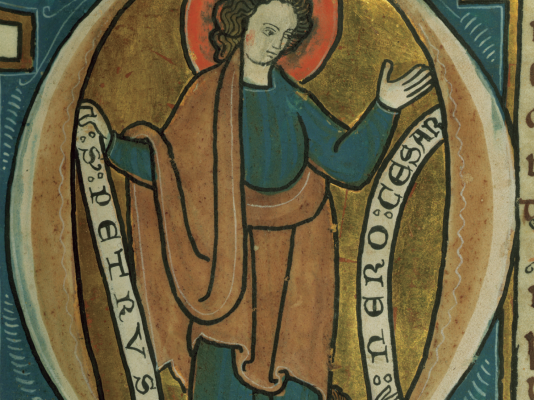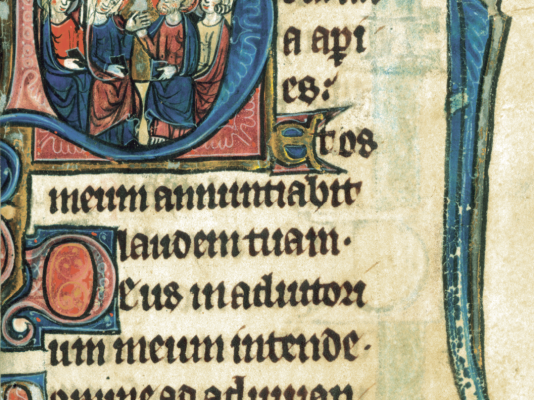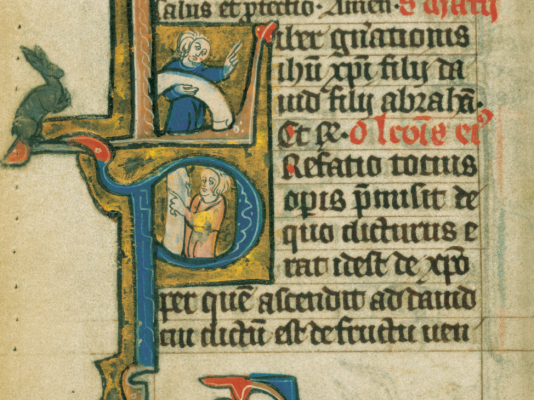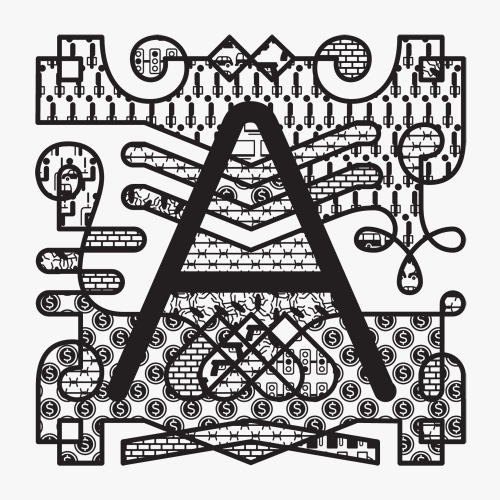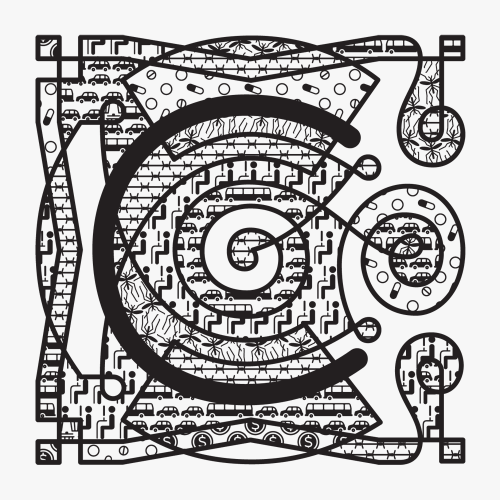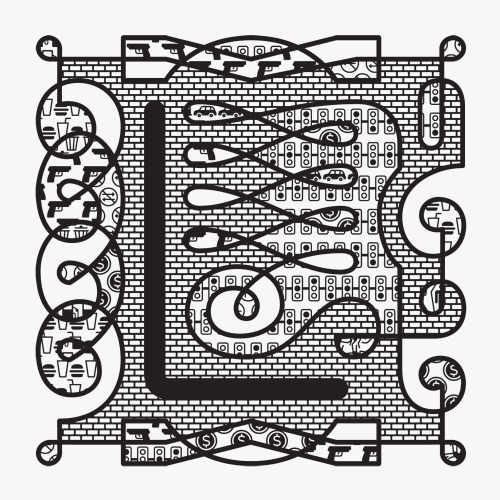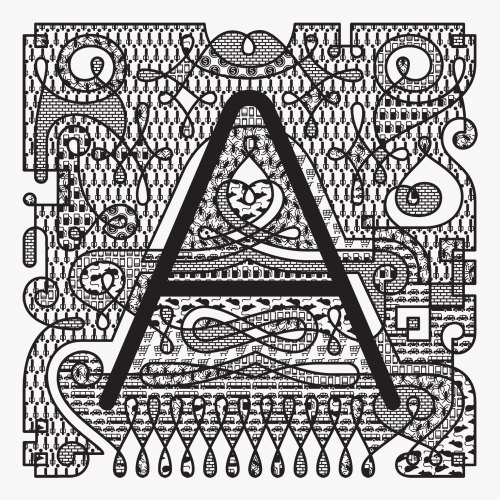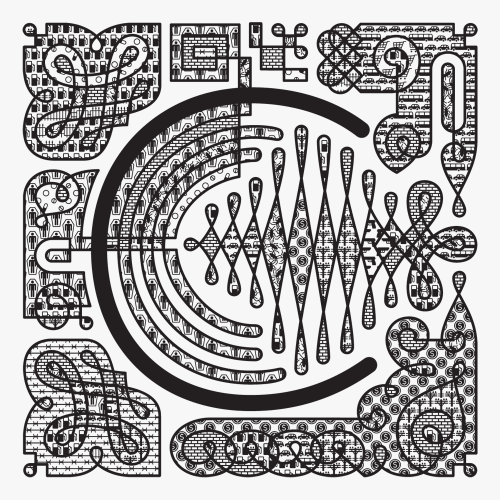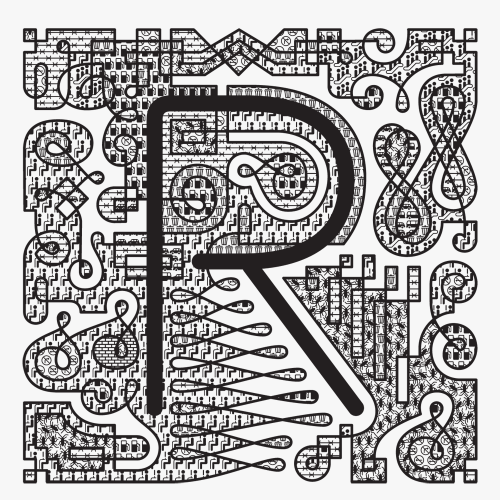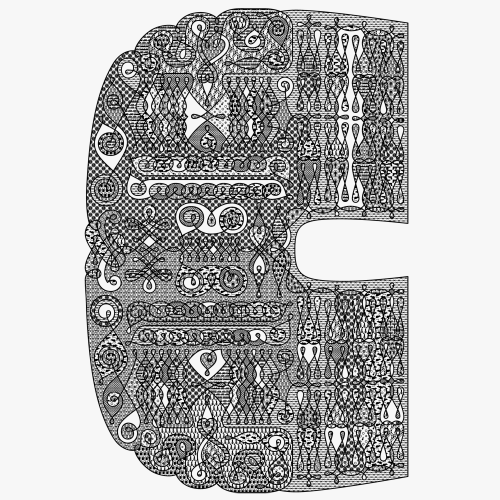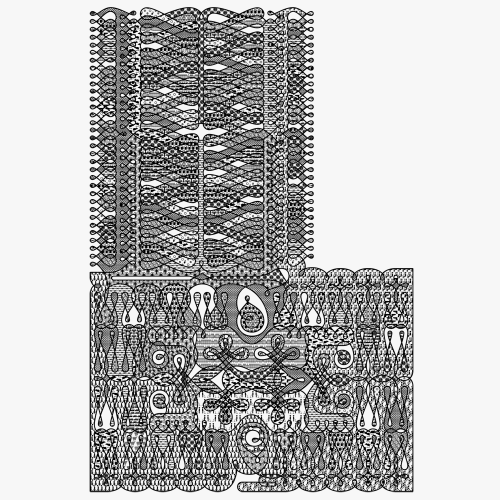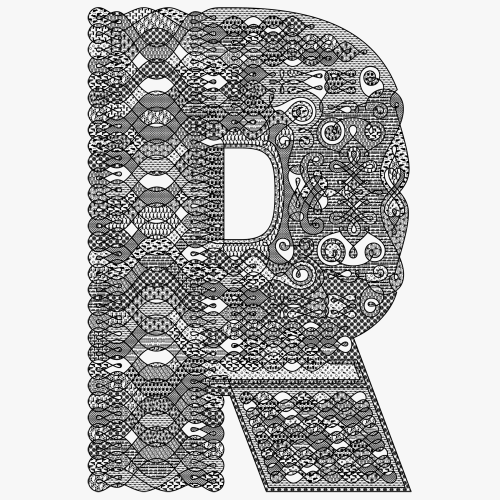Dentre todos esses elementos, contudo, nenhum outro exerce, até hoje, tamanho poder de sedução quanto as capitulares iluminadas das Bíblias medievais.
Se, no início da era cristã, estas se limitavam ao cumprimento de uma tarefa prática — facilitar a leitura —, com o passar do tempo ganharam protagonismo visual e funções muito além do formato da letra a que se referiam. Aquelas que receberam conteúdo decorativo foram, então, denominadas capitulares decoradas. Ao se misturarem com um conteúdo ilustrativo, ganharam o nome de capitulares habitadas — iniciais que continham desenhos e representações figurativas, humanas ou animais. Quando, no início do século VIII, esse conteúdo visual passou a ilustrar passagens do texto suportado (ou mesmo a acrescentar imagens com narrativa desvinculada a ele), deu-se o nome de capitulares historiadas. E sua função já não se resumia à hierarquização do texto: acumulara as tarefas de estabelecer uma narrativa visual, assim como, dependendo de sua complexidade e acabamento, de sinalizar o valor de cada exemplar. Em muitos casos, a capitular definia a própria estrutura de diagramação de uma página, demonstrando seu protagonismo na concepção visual de um manuscrito medieval. Tamanhas eram suas possibilidade gráficas que chegavam ao ponto de mal serem percebidas como letras. Não é incomum termos dificuldade para discernir qual, afinal, é o caractere que algumas capitulares historiadas representam.
Amongst all these elements however, no other exercises to date, such seductiveness as the illuminated initials of medieval Bibles.
If, at the beginning of the Christian era, these were limited to the performance of a practical task— to facilitate the reading experience — with the passage of time, they fulfilled the role of a visual protagonist with functions that went far beyond the shape of the letter to which they referred. Those that received decorative content were then called “decorated” initials. When combined with illustrative content, they were given the name of “inhabited” initials — initials containing drawings and figurative human or animal representations. When, at the beginning of the eighth century, this visual content began to illustrate passages of the supporting text (or even to add images with a disconnected narrative), they became “historiated” initials. And its function was no longer limited to the hierarchy of the text; acquiring the task of establishing a visual narrative, as well as portraying the value of each copy, depending on its complexity and finish. In many cases, the initial defined the very structure of the layout of a page, demonstrating its role as a protagonist in the visual design of a medieval manuscript. Such were the graphic possibilities that some reached a stage whereby they were barely perceived as being letters. It is not uncommon to experience difficulty in discerning what letter some historiated initials represent.



